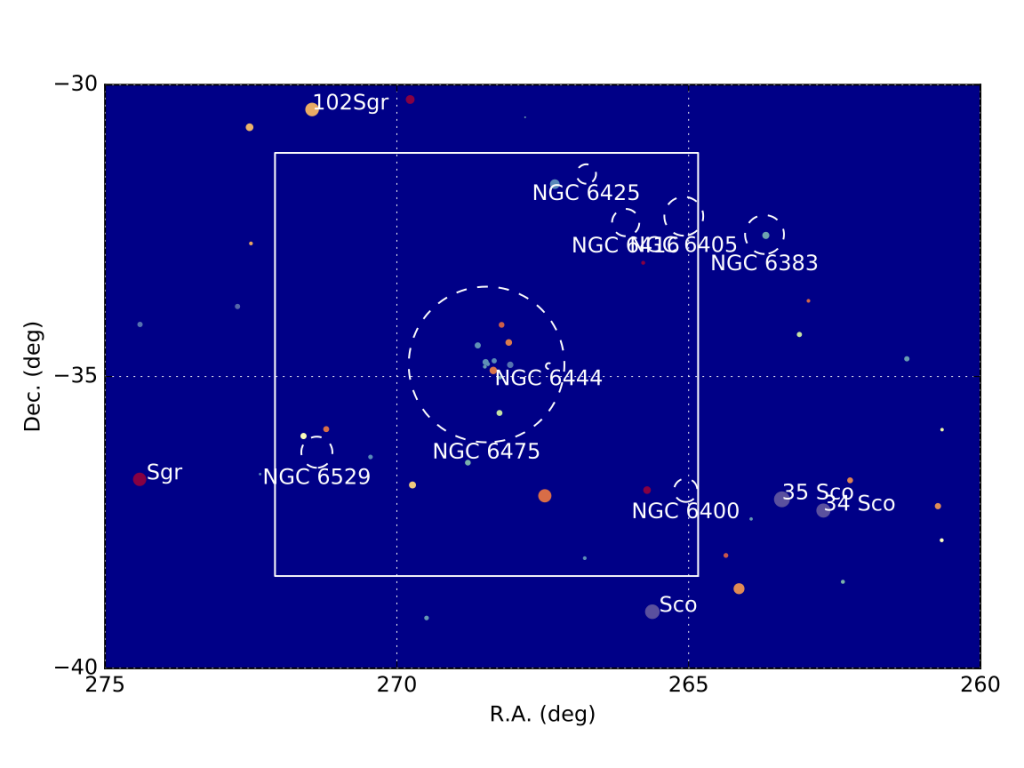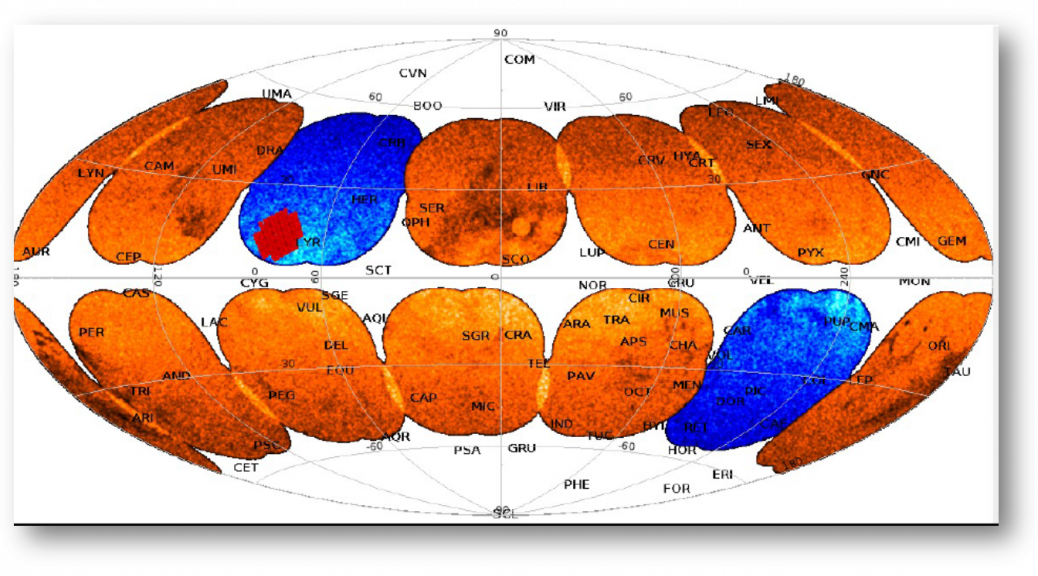There are three principle goals with decreasing priority:
- Provide seasonal-long light curves of all targets in the long-duration southern PLATO field. Determine the eclipsing binaries in the field and extract a variability flag for all accessible stars on the basis of the long-term brightness rms. Aim for n ≈ 100 visits per star in one observing season with a time resolution of (at best) one day. It will enable the determination of precise photometric periods, in particular stellar rotation periods, and the expected degree of spot activity from time changes in the light curves.
- Determine the target contamination down to 2.5′′ for every PLATO pixel on the sky (its pixel size is 15′′). Aim for a magnitude difference of 5 mag in V, i.e. list contaminating targets down to V≈18mag;
- Cross correlate targets with the GAIA eDR3 and standardize the photometry using the APASS DR9 catalogue.


